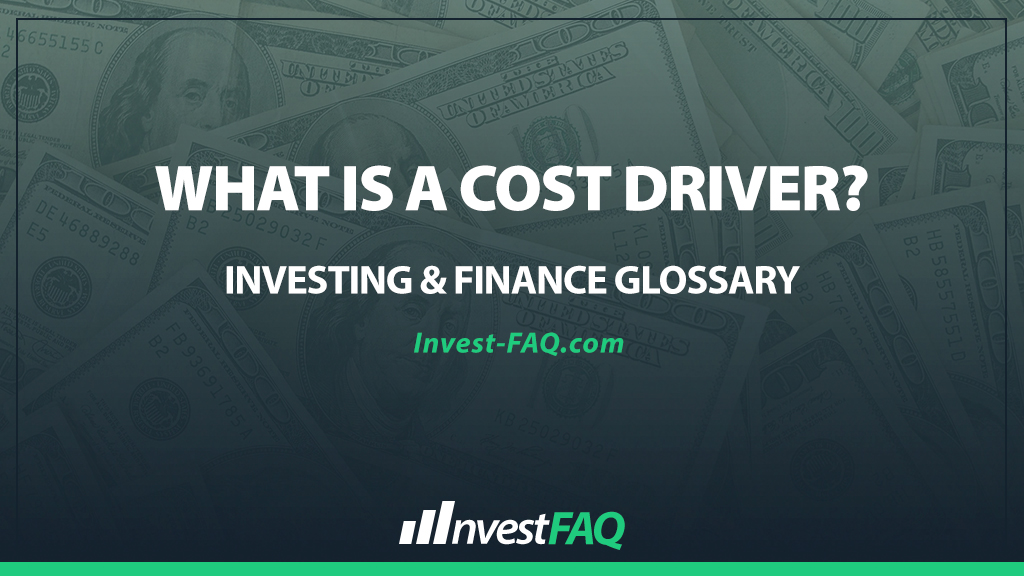
Cost Driver
Contents
A cost driver is a factor that causes a change in the cost of an activity. It is essential for determining the causal relationship between a cost and its drivers, enabling businesses to accurately allocate costs based on actual consumption or usage.
In the business realm, understanding and managing cost drivers is crucial for effective cost control, pricing strategies, and overall financial management.
By identifying the primary factors that drive costs, companies can make informed decisions to optimize operations, reduce waste, and enhance profitability. Cost drivers vary across different activities and processes, including production volume, machine hours, labor hours, and the number of transactions.
Example of a Cost Driver
Consider a manufacturing company, “ABC Widgets Ltd.,” that produces widgets. One of the significant cost drivers identified for the production process is machine hours. If producing 1,000 widgets requires 500 machine hours, and the cost per machine hour (including depreciation, electricity, maintenance) is $20, then the total cost allocated to the production of these widgets based on the machine hours cost driver is $10,000.
In this example, the cost driver (machine hours) directly influences the total production cost of the widgets. By understanding this relationship, ABC Widgets Ltd. can implement strategies to improve machine efficiency or reduce the cost per machine hour, thereby decreasing the total production cost.
This approach allows for a more accurate allocation of production costs to specific products, which is crucial for pricing decisions, profitability analysis, and financial reporting.
Types and Uses in Business Scenarios
Cost drivers are applicable in various business scenarios, including:
Product Costing: Assigning production costs to products based on the consumption of cost-driving activities.
Budgeting and Forecasting: Estimating future costs by analyzing the expected change in cost drivers.
Cost Management: Identifying opportunities for cost savings by examining the activities and factors that drive costs.
Decision Making: Supporting strategic decisions regarding process improvements, product design, and resource allocation.
Understanding cost drivers is key to activity-based costing (ABC), a methodology that assigns costs to products and services based on the resources they consume. This approach provides a more accurate picture of the cost behavior and profitability of different products or services.
Significance for Investing & Finance
From an accounting perspective, the concept of cost drivers is significant for several reasons:
Accurate Cost Allocation: Helps in accurately allocating costs to products, services, or departments, reflecting the true consumption of resources.
Improved Financial Analysis: Enables more precise cost control, profitability analysis, and performance measurement.
Strategic Decision Support: Provides valuable insights for strategic decision-making regarding pricing, investment, and operational efficiencies.
In summary, cost drivers play a critical role in the management accounting process, offering a foundation for understanding how costs are incurred and how they can be managed.
By identifying and analyzing cost drivers, businesses can enhance their cost accounting practices, leading to better financial management and strategic decision-making.
FAQ
What distinguishes a cost driver from a fixed cost in accounting?
A cost driver is a factor that influences the cost of an activity, causing it to increase or decrease, whereas a fixed cost remains unchanged regardless of the level of activity or production volume.
How can identifying cost drivers help in reducing operational costs?
By identifying cost drivers, a company can analyze the root causes of high expenses and implement strategies to improve efficiency and reduce costs, such as optimizing resource usage or improving process efficiencies.
Are cost drivers the same for every industry or do they vary?
Cost drivers vary significantly across industries and even among companies within the same industry, as they are influenced by the specific activities, processes, and operational practices unique to each business.
Can a cost driver affect more than one type of cost or expense in a company?
Yes, a single cost driver can influence multiple types of costs or expenses within a company, for example, an increase in production volume can drive up both material costs and labor costs.
